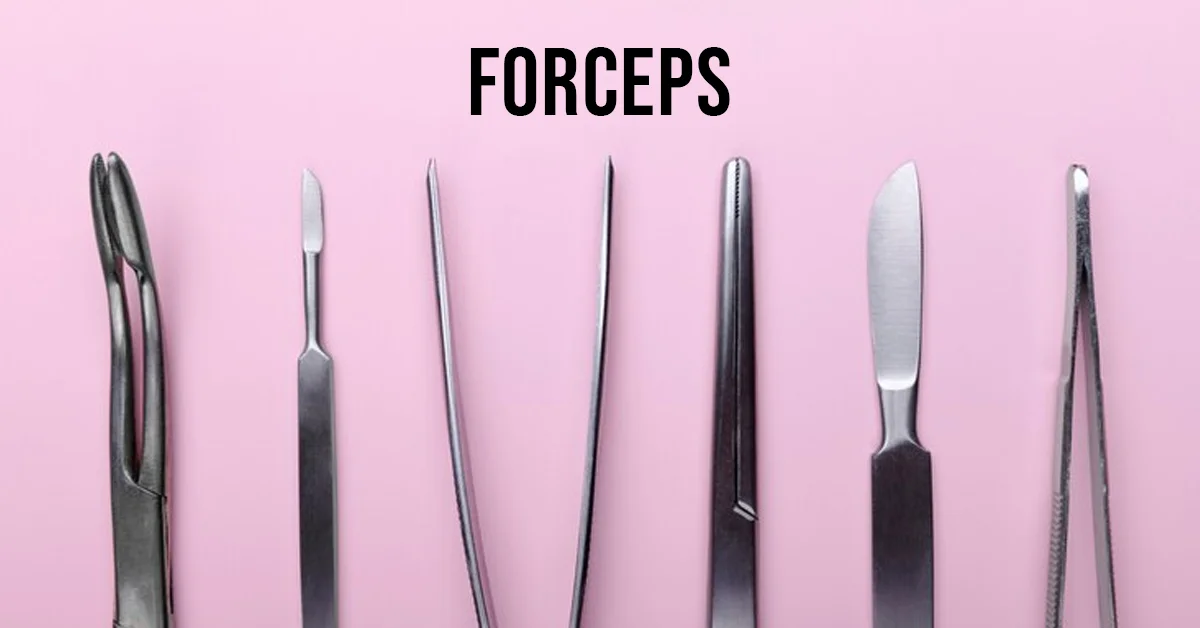Forceps are indispensable tools in various fields, especially in medicine and surgery. They are used to grasp, hold, and manipulate tissues or other materials, providing essential assistance during procedures. In this ultimate guide, we will explore the different types of forceps, their uses, benefits, and frequently asked questions to help you understand these crucial instruments.
ALSO READ: Before Its News: Your Essential Guide To Alternative Media
Table of Contents
ToggleWhat Are Forceps?
Forceps are hand-held, hinged instruments designed for grasping and holding objects. Their design is somewhat similar to scissors, but instead of cutting, they provide a secure grip. Forceps come in various shapes, sizes, and materials, depending on their specific applications.
Historical Context
The history of forceps dates back to ancient civilizations, where rudimentary versions were used in medical practices. Over centuries, advancements in design and material have led to the development of specialized forceps that cater to different medical and surgical needs.
Types Of Forceps
Forceps can be classified based on their design, functionality, and specific applications. Here are some of the most common types:
Surgical Forceps
Surgical forceps are commonly used in medical settings for various procedures. They can be further divided into two main categories:
Grasping Forceps
These forceps are designed to grasp and hold tissue or objects securely. Common examples include:
- Allis Forceps: Used for grasping tissue during surgeries, especially in abdominal procedures.
- Babcock Forceps: Ideal for grasping delicate tissues, such as intestines or fallopian tubes, without causing trauma.
Hemostatic Forceps
These forceps are used to control bleeding by clamping blood vessels. They are crucial during surgeries. Examples include:
- Mosquito Forceps: Small, curved or straight forceps used to clamp small vessels.
- Kelly Forceps: Larger than mosquito forceps, they are used for larger vessels and tissues.
Non-Surgical Forceps
These forceps are utilized in various other fields, including obstetrics, dentistry, and laboratory work.
Obstetric Forceps
Obstetric forceps assist in childbirth. They are used to help deliver the baby when complications arise. Types include:
- Favaloro Forceps: Designed for specific types of delivery scenarios.
- Kielland Forceps: A versatile type of obstetric forceps, ideal for rotating the baby’s head during delivery.
Dental Forceps
Dental forceps are specialized tools used by dentists for tooth extraction and other oral procedures. Common types include:
- Upper and Lower Universal Forceps: Designed for extracting upper and lower teeth, respectively.
- Root Tip Forceps: Specifically designed for removing root fragments left after a tooth extraction.
Laboratory Forceps
In laboratory settings, forceps are used to handle delicate specimens and materials. They come in various styles, including:
- Dressing Forceps: Used for applying dressings or handling sterile materials.
- Tweezers: Fine-tipped forceps used for precise manipulation of small items.
Uses Of Forceps
Forceps have a wide range of applications, particularly in healthcare and scientific research. Here are some of their primary uses:
Medical Procedures
In surgeries, forceps are essential for:
- Grasping tissues
- Clamping blood vessels
- Assisting in suturing
- Facilitating delivery during childbirth
Dental Care
In dentistry, forceps are critical for:
- Tooth extractions
- Removing tissue during surgical procedures
- Holding objects or tissues in place
Laboratory Research
In laboratory settings, forceps are used for:
- Handling delicate samples
- Applying and removing materials in experiments
- Ensuring sterility in sample handling
Benefits Of Using Forceps
The use of forceps in medical and laboratory settings provides numerous benefits:
Precision
Forceps allow for precise manipulation of tissues and materials, minimizing the risk of damage.
Control
They provide a strong grip, giving practitioners better control over delicate procedures.
Safety
Forceps reduce the risk of injury to both patients and practitioners by allowing for safer handling of sharp or delicate instruments.
Efficiency
Using forceps can speed up procedures, reducing the time required for surgeries and other interventions.
Versatility
With various designs and types available, forceps can be adapted for a wide range of applications across multiple fields.
Conclusion
Forceps are vital tools in various medical, dental, and laboratory settings. Understanding the different types, their uses, and benefits can enhance your knowledge and application of these instruments. Whether you’re a healthcare professional or a student, familiarizing yourself with forceps will undoubtedly improve your skill set and patient care.
ALSO READ: NFS High Stakes Toyota Land Cruiser: Unlock Performance Tips
FAQs
What is a forcep used for?
Forceps are used to grasp, hold, and manipulate tissues or objects during medical procedures, childbirth, dental care, and laboratory experiments.
How do I choose the right forceps for a procedure?
Choosing the right forceps depends on the specific procedure, the type of tissue or material you’re working with, and the level of precision required. Always consult with medical guidelines or a professional.
Are forceps reusable?
Most surgical and dental forceps are designed for reuse after proper sterilization, while some laboratory forceps may be single-use, depending on their design and application.
Can forceps cause injury?
While forceps are designed for safety, improper use or excessive force can cause tissue damage or injury. It’s essential to use them with care and precision.
How do I maintain forceps?
Forceps should be cleaned and sterilized after each use. Regular inspection for wear and damage is also necessary to ensure their functionality and safety.

